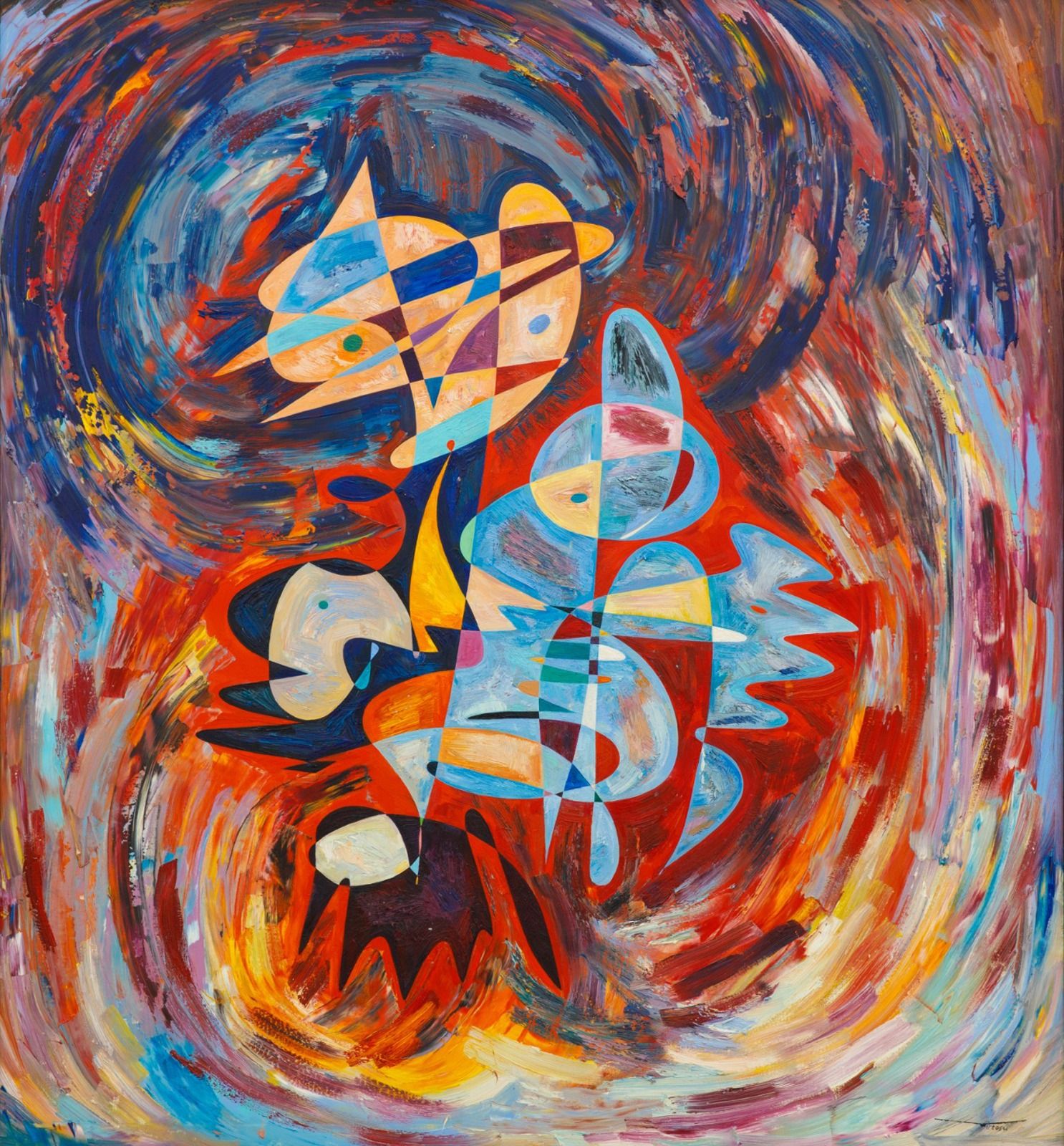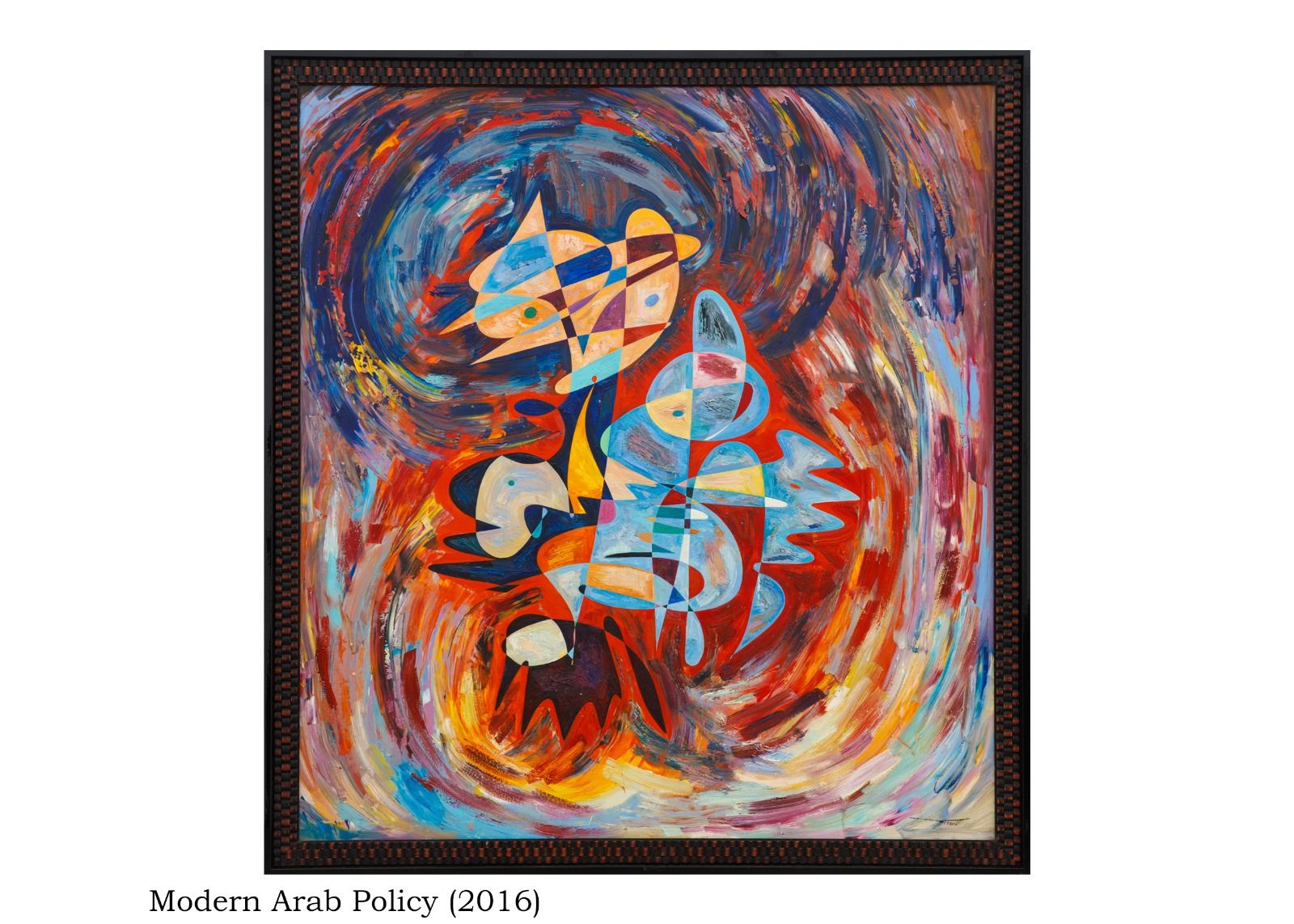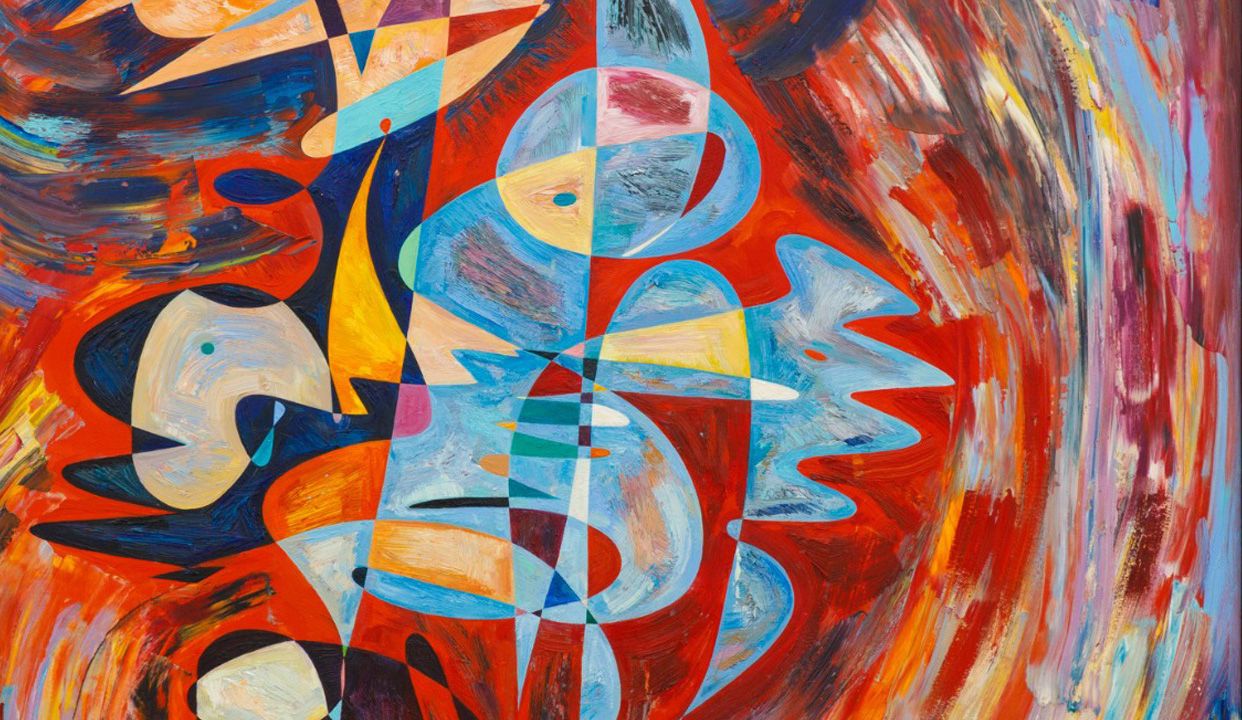

-
Year 2016
-
150x138 Cm / 59x54 In
-
Oil / Acrylic Base / Linen Canvas
-
Original Edition

Modern Arab policy (2016)
-
Year 2016
-
150x138 Cm / 59x54 In
-
Oil / Acrylic Base / Linen Canvas
-
Original Edition
-
Sold
Modern Arab policy (2016) oil painting Description
In his “Modern Arab Policy” canvas, the artist dynamically conveys the sense of drama and action that contoured the diplomatic relations of the Arab region and its partners. The back-and-forth movement, specific to any type of negotiation, was the defining trait for the stability the Peninsula has been aiming for especially since the Arab spring burst. Recalling relations with countries such as France and USA, reverberations of the “new Arab policy” reinforced by the French president Chirac become visible. The reversal of the marginalized role foreign countries had in the Middle East was not a concern only of Chirac’s, but of any president that wanted to impose its own system of beliefs on the traditional and sometimes too rigid Arab identity. Memories of hoaxes enacted by nationalities part of the region, such as the Israelis, in the French harbor which was withholding missile boats, the Cherbourg project of 1969, is only one example of power extortion. The Peninsula is known for inciting competing identities to strive for domination in an unfamiliar area. Vîrtosu recalls this repetitive process and updates our memory of history, asking for our attention towards the new policies that surveil the same region. “Modern Arab Policy” becomes thus a warning, as world leaders such as China take on the scene with projects like the Maritime Silk Road.
In order to amplify the sense of contradiction, the artist captures those bold, improvisational brushstrokes within the clear, well-thought outlines of geometric drawing.
The artist doesn’t copy the natural forms, but rather follows their dynamics and movement: sudden twists of the line, compositional pauses, coloristic bursts are consonant with the natural processes of birth, growth, and decay.
-
Art Advisory Services


